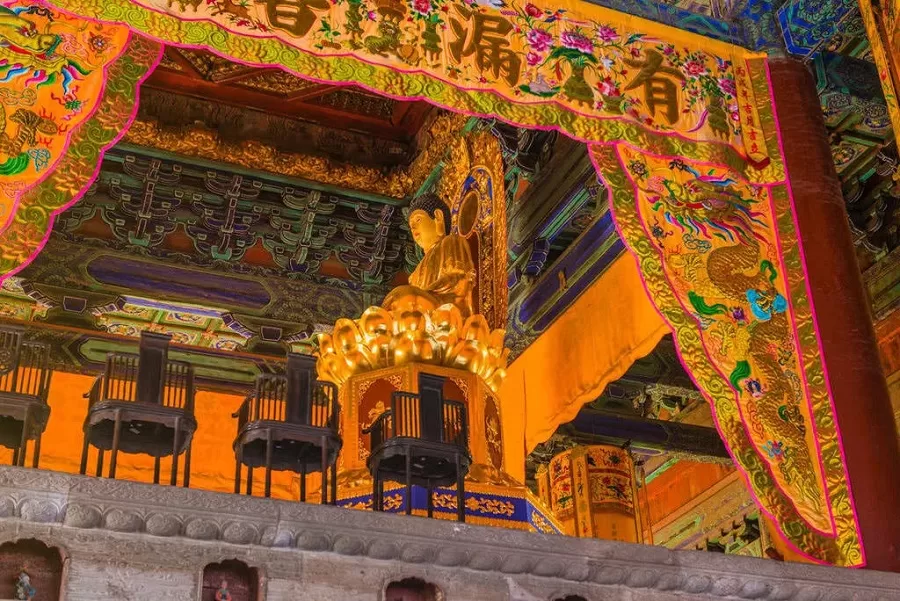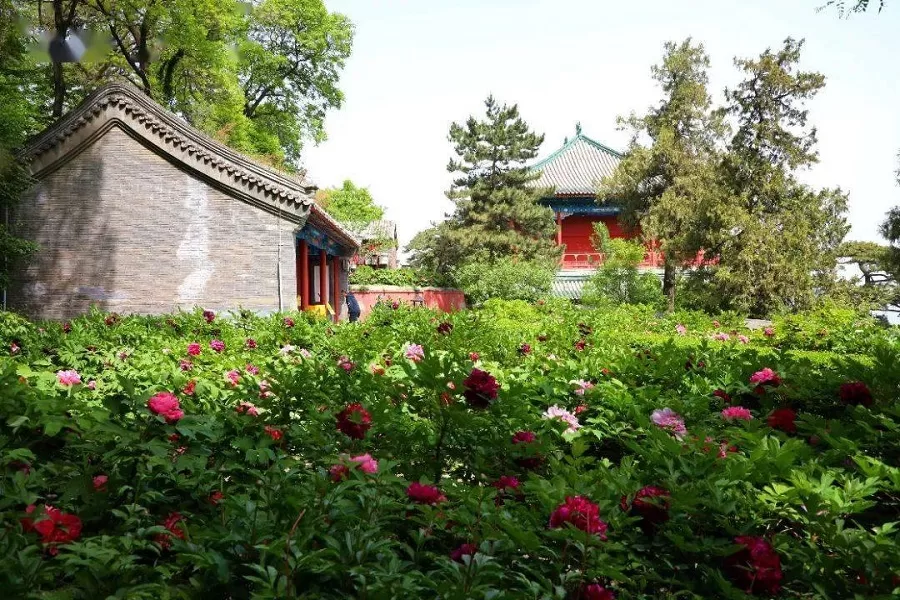Jietai Temple (戒台寺) is a famous Buddhist temple located in Mentougou District of Beijing, China. It was first built during the Tang Dynasty (618-907) and has a history of over 1,300 years. The temple is situated at the foot of Jietai Mountain, which is known for its beautiful scenery and historical significance.
The temple complex covers an area of 4.3 hectares and includes a main hall, a Bell Tower, a Drum Tower, and several other smaller halls and pavilions. The main hall houses a large statue of Sakyamuni Buddha, along with other statues of Buddhist deities and historical figures.
Jietai Temple is also known for its beautiful natural surroundings, with lush forests and mountain streams adding to the peaceful atmosphere of the temple. The temple is a popular destination for both tourists and locals alike, especially during traditional Buddhist festivals.
Table of Contents
- Basic Information
- Location and Transportation
- History of Jietai Temple
- Highlights of Jietai Temple
- Vlog about Jietai Temple
- Useful Tips Summarized from Reviews
- Other Temples in Beijing
Basic Information
| Website | https://www.bjjietaisi.com/ |
| Estimated Length of Tour | 2 hours |
| Ticket Price | 45 RMB |
| Opening Hours | 8.30 – 17.00 (Spring and Summer) 8.30 – 16.30 (Autum and Winter) |
| Telephone Number | 0086-010-69802232 |
Location and Transportation
Jietai Temple is situated at the foot of Jietai Mountain, which is about 50 kilometers west of the city center. The exact address is Jietai Temple Jietai Mountain, Mentougou District. Visitors can reach the temple by car or by taking public transportation such as buses or taxis.
Bus: Take bus 938 or M44, get off at Jietai Temple Stop (戒台寺), and walk about 100 meters to the south to reach the entrance.
History of Jietai Temple
Jietai Mountain, where Jietai Temple is located, has a rich history dating back over 1,300 years. The mountain is believed to have been an important religious site for Buddhists since the Tang Dynasty (618-907), and many temples and shrines have been built in the area over the centuries.
Legend has it that during the Tang Dynasty, a group of monks arrived at the foot of the mountain and began to build a temple. However, they encountered many difficulties and setbacks in their construction, and the temple remained incomplete for many years. One day, a deity appeared to the monks and told them to look for a piece of wood that would serve as the key to finishing the temple. The monks searched the mountain and eventually found a piece of wood that fit perfectly in the temple’s door. The temple was then completed, and the piece of wood became known as the “key to the temple” or “Jietai” in Chinese.
Over the centuries, Jietai Mountain has been a popular destination for pilgrims and tourists alike, drawn to its natural beauty and spiritual significance. Many famous poets and scholars have visited the mountain and written about its beauty and tranquility.
During the Ming Dynasty (1368-1644), the temple complex was expanded and renovated, and many of the buildings that still stand today were constructed during this time. In the centuries that followed, the temple fell into disrepair and was damaged during wars and conflicts. However, it was restored in the 1980s and is now a well-maintained cultural and religious site.
Highlights of Jietai Temple
The Jietai Altar

The Jietai Altar, a 3.5-meter-high Han white marble platform with exquisite carvings, is located in the northwest courtyard. Around the altar, there are 113 carved statues of the “Jie Shen,” each standing over one foot tall. At the altar’s center, there is a seated statue of Sakyamuni Buddha, and in front of it, there are ten carved wooden chairs reserved for the “Three Masters and Seven Certificates” during monks’ ordination. The Jietai Altar is a Ming Dynasty relic and, along with Hangzhou’s Zhaoqing Temple and Quanzhou’s Kaiyuan Temple, is renowned as the “Three Great Altars of China.” Among them, the Jietai Altar is ranked as the “Number One Altar in the World.”
The Peony Garden

During the late Qing Dynasty, Prince Gong Yixin, the sixth son of Emperor Daoguang, sought refuge in Jietai Temple for ten years, starting from 1884, due to a power struggle within the imperial court. During his stay, he financed the renovation of the Beigong courtyard where he resided, turning it into a beautiful garden within the temple, complete with elegant surroundings and picturesque scenery. The architecture of the Peony Garden ingeniously combines the traditional Beijing-style quadrangle courtyard with the delicate art of southern gardens, showcasing the simplicity of northern courtyards and the beauty of southern gardens.
The Maitreya Statue

The Jietai Temple’s wooden statue of Maitreya Buddha is carved from a single Millennium Camphor Wood root, displaying an exquisite craftsmanship and a lifelike form. The Buddha stresses the values of generosity and acceptance, encouraging individuals not to obsess over worldly right and wrong, love, or hatred. Additionally, camphor wood is one of the three primary materials used for imperial wooden crafts during the Ming and Qing dynasties, and is renowned for its hard texture and fragrant scent. The Millennium Camphor Wood, in particular, is considered a precious treasure, and the older the camphor tree, the more valuable it becomes.
The Bell Pavilion

In Jietai Temple, there is a bell pavilion that was originally a part of Jizang Monastery. The pavilion has a unique design with a curled-up roof and four pillars forming a crossed shape. A large iron bell, named “Youming Bell,” used to hang in the pavilion, which was 3.2 meters high and had a bottom diameter of 2.2 meters. It was mainly used for the annual Jizang ceremony held in Jietai Temple every July 30th. It is surrounded by mountains on three sides and faces the plain to the east, overlooking the surroundings unobstructed. The surrounding mountains form a natural resonance chamber, allowing the sound of the bell to resonate and echo. It is said that the sound of the bell can be heard up to 40 kilometers away, reaching the village of Bali Zhuang outside Fuchengmen.
The Main Hall

The main hall of Jietai Temple in Beijing, also known as the Hall of Great Benevolence, is a magnificent and grand building with a history dating back over 1,000 years. The hall is the most important building in the temple and is the site of various important ceremonies and rituals. It houses several precious Buddhist statues, including the statue of Shakyamuni Buddha, the main deity of the temple, and the statues of his two disciples, Ananda and Kasyapa. The hall’s roof is adorned with beautifully painted dragons and other mythical creatures, while the interior features intricate wood carvings and vibrant frescoes.
Vlog about Jietai Temple
Useful Tips Summarized from Reviews
Meals at Dazhaitang (Great Meal Hall): Dazhaitang offers two meals daily at 11:30 AM and 12:00 PM, providing a fully satisfying vegetarian meal for 20 yuan per person. During mealtime, visitors are expected to maintain silence to respect the tranquil atmosphere. Additionally, between 12:30 PM and 2:00 PM, Jietai Temple serves Jietai Mushroom Vegetarian Noodles for 30 yuan per person.
Ancient Trees: Jietai Temple boasts 109 ancient trees, which carry significant historical and cultural significance. Among them, 44 are classified as first-grade ancient trees, and 65 are second-grade. The most renowned ones include the “Bao Ta Pine,” “Reclining Dragon Pine,” “Nine Dragons Pine,” “Active Pine,” and “Free Pine,” collectively known as the “Five Pines of Jietai Temple.”
Hiking Trail: The hiking trail is located at the back mountain of Jietai Temple, circling around the temple in both directions. Apart from admiring the temple’s pine forest, visitors can also enjoy panoramic views of the entire temple complex and the surrounding Shijingshan district. Especially from the mountain peak, one can behold the mountain ranges opposite Qianlingshan, offering spectacular vistas and a serene environment.







